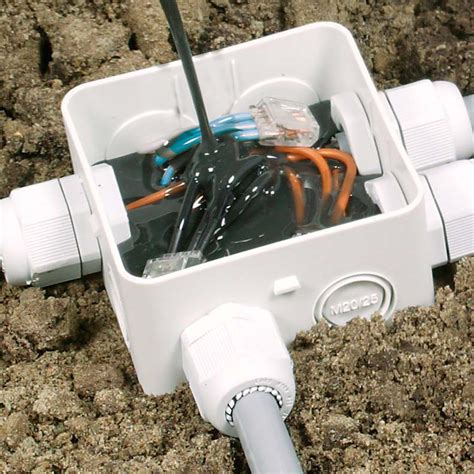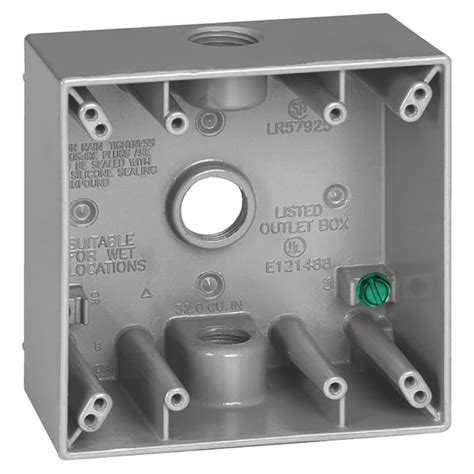can a low voltage junction box be inside a wall May need a surface-mount junction box or receptacle to get 120V. It's quite common to remotely mount transformers -- eg, it's very common for low-voltage under-cabinet lighting in kitchens that the transformer is located in the basement near the electrical panel or other unfinished .
Wright design, Dana Sumac, illuminated in copper and enamel metalwork with a glass insert. Battery operated tealight included. 2-1/4"d x 3-1/4"h.
0 · waterproof underground electrical junction box
1 · waterproof low voltage junction box
2 · waterproof junction box lowe's
3 · waterproof 12v junction box
4 · surface mount low voltage box
5 · low voltage single gang box
6 · low voltage outlet box
7 · low voltage electrical outlet box
This item is a recurring or deferred purchase. By continuing, I agree to the and authorize you to charge my payment method at the prices, frequency and dates listed on this page until my .
They certainly do make that in a "junction box cover" form-factor; however it's pretty industrial looking since it's made for installation in unimproved spaces, and the low voltage side (and often the whole transformer) sits on the outside of the box.My (possibly XY) solution to this problem is to put a 2-gang box in the wall with a .May need a surface-mount junction box or receptacle to get 120V. It's quite . Considering the NEC guidelines, it is generally not recommended to place a junction box inside a wall. This is primarily because accessibility can be compromised if the junction box is hidden within the wall cavity.
My (possibly XY) solution to this problem is to put a 2-gang box in the wall with a high/low voltage divider plate, wire in a snap-in outlet (or similarly small outlet) and mount the outlet in the divider plate, and plug in the wall wart (inside the junction box) to this outlet.May need a surface-mount junction box or receptacle to get 120V. It's quite common to remotely mount transformers -- eg, it's very common for low-voltage under-cabinet lighting in kitchens that the transformer is located in the basement near the electrical panel or other unfinished .It is a safety hazard to completely bury a junction box in a wall. A junction box, also known as a splice or switch box, is an electrical enclosure inside your . No box is needed for your splice and it can be buried. The transformer needs to be accessible. Repulling the 18-2 as mentioned would save possible trouble later, but its not required.
The canopy mounts to a junction box on the ceiling or wall. PRO TIP: Fixture canopies are often polished chrome, which is easy to cloud with fingerprints. Wearing lightweight plastic gloves solves the problem; nitrile plastic gloves are . Inside a residential home, is it a code violation to splice 12V DC low voltage wires together using simple wire nuts? That is, the splice is not made in a junction box. Not inside a wall, but maybe above or below a kitchen cabinet. They certainly do make that in a "junction box cover" form-factor; however it's pretty industrial looking since it's made for installation in unimproved spaces, and the low voltage side (and often the whole transformer) sits on the outside of the box.
Considering the NEC guidelines, it is generally not recommended to place a junction box inside a wall. This is primarily because accessibility can be compromised if the junction box is hidden within the wall cavity.My (possibly XY) solution to this problem is to put a 2-gang box in the wall with a high/low voltage divider plate, wire in a snap-in outlet (or similarly small outlet) and mount the outlet in the divider plate, and plug in the wall wart (inside the junction box) to this outlet.May need a surface-mount junction box or receptacle to get 120V. It's quite common to remotely mount transformers -- eg, it's very common for low-voltage under-cabinet lighting in kitchens that the transformer is located in the basement near the electrical panel or other unfinished (serviceable) area. –
It is a safety hazard to completely bury a junction box in a wall. A junction box, also known as a splice or switch box, is an electrical enclosure inside your home that contains wiring. Electrical wires run behind the walls and through the ceiling of your home, meeting at junction boxes. No box is needed for your splice and it can be buried. The transformer needs to be accessible. Repulling the 18-2 as mentioned would save possible trouble later, but its not required.The canopy mounts to a junction box on the ceiling or wall. PRO TIP: Fixture canopies are often polished chrome, which is easy to cloud with fingerprints. Wearing lightweight plastic gloves solves the problem; nitrile plastic gloves are especially flexible. Inside a residential home, is it a code violation to splice 12V DC low voltage wires together using simple wire nuts? That is, the splice is not made in a junction box. Not inside a wall, but maybe above or below a kitchen cabinet.

waterproof underground electrical junction box
You can’t conceal junction boxes in ceilings, walls or non-accessible attics and under-floor areas. In addition, they should not be placed in areas where flammable gases, vapors or dust are present in an amount that could result in a fire or explosion. It’s low voltage cable, doesn’t need conduit and it’s not terminated or traveling through a box that has any high voltage power. But the end result would still be an eyesore with a wall wort hanging out of the receptacle. They certainly do make that in a "junction box cover" form-factor; however it's pretty industrial looking since it's made for installation in unimproved spaces, and the low voltage side (and often the whole transformer) sits on the outside of the box. Considering the NEC guidelines, it is generally not recommended to place a junction box inside a wall. This is primarily because accessibility can be compromised if the junction box is hidden within the wall cavity.
My (possibly XY) solution to this problem is to put a 2-gang box in the wall with a high/low voltage divider plate, wire in a snap-in outlet (or similarly small outlet) and mount the outlet in the divider plate, and plug in the wall wart (inside the junction box) to this outlet.
May need a surface-mount junction box or receptacle to get 120V. It's quite common to remotely mount transformers -- eg, it's very common for low-voltage under-cabinet lighting in kitchens that the transformer is located in the basement near the electrical panel or other unfinished (serviceable) area. –
It is a safety hazard to completely bury a junction box in a wall. A junction box, also known as a splice or switch box, is an electrical enclosure inside your home that contains wiring. Electrical wires run behind the walls and through the ceiling of your home, meeting at junction boxes. No box is needed for your splice and it can be buried. The transformer needs to be accessible. Repulling the 18-2 as mentioned would save possible trouble later, but its not required.
The canopy mounts to a junction box on the ceiling or wall. PRO TIP: Fixture canopies are often polished chrome, which is easy to cloud with fingerprints. Wearing lightweight plastic gloves solves the problem; nitrile plastic gloves are especially flexible. Inside a residential home, is it a code violation to splice 12V DC low voltage wires together using simple wire nuts? That is, the splice is not made in a junction box. Not inside a wall, but maybe above or below a kitchen cabinet.

You can’t conceal junction boxes in ceilings, walls or non-accessible attics and under-floor areas. In addition, they should not be placed in areas where flammable gases, vapors or dust are present in an amount that could result in a fire or explosion.

home phone junction box wiring

waterproof low voltage junction box
New BigSteelBoxes are “one-trip” containers, received directly from our manufacturing plant in China. They’re white, have waist-height door handles, and Lock Boxes welded to the doors. .
can a low voltage junction box be inside a wall|waterproof 12v junction box